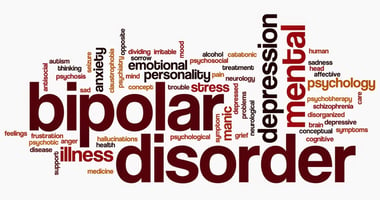Benzodiazepine use in patients with bipolar disorders is associated with greater illness complexity...
Patients Using Benzodiazepines Found at Low Risk of Long-Term Use, Unsafe Doses

Most people who received prescriptions for benzodiazepines and related drugs were not long-term users and did not escalate to higher-than-recommended doses, according to a large population-based longitudinal study in AJP in Advance.
Benzodiazepine receptor agonists (BZRAs), which include benzodiazepines and the so-called “Z-drugs” (zopiclone, eszopiclone, zaleplon, and zolpidem), are the most commonly used drugs for treating insomnia and anxiety. However, because people may build up a tolerance to the drugs and can abuse them, many countries have sought to restrict their prescription. In 2020, the Food and Drug Administration updated the boxed warning on all BZRAs to explicitly “address the serious risks of abuse, addiction, physical dependence, and withdrawal reactions.”
“Although our findings do not refute the possibility that long-term use might have been higher without restriction, our results suggest that rigorously focusing on reducing long-term use of BZRAs may be outdated and should be replaced with an increased focus on selecting the appropriate treatment for each patient,” wrote Thomas Wolff Rosenqvist, M.D., of the Center for Clinical Research and Prevention at Bispebjerg and Frederiksberg Hospitals in Denmark and colleagues.
Using data from the Danish Civil Registration System, the researchers identified 950,767 individuals who initiated hypnotic benzodiazepines, anxiolytic benzodiazepines, or Z-drugs, respectively, between January 1, 2000, and December 31, 2020. The primary outcomes were long-term use, defined as use of BZRAs for more than one year and more than seven years. Researchers also looked at dose escalation for all users who had an uninterrupted period of BZRA use of at least three years from treatment initiation.
Among the entire cohort, 46% had only a single purchase of a BZRA, and 22% had more than five purchases. For individuals with more than one purchase, the median treatment duration was 273 days.
The overall risk of use for more than one year was 15%, and the risk of use for more than seven years was 3%. The proportion of long-term users was highest among individuals who initiated treatment with Z-drugs (17.8%) and lower for users of anxiolytic and hypnotic benzodiazepines (13.1% and 9.8%, respectively).
Among the 5% of users who had at least three years of continuous use, there was no indication of dose escalation, and the median dose remained stable. However, 7% (N=3,545) of users escalated to doses above the recommended level. Psychiatric comorbidity, especially substance use disorder, was associated with higher risk of long-term use and dose escalation.
The researchers concluded, “We suggest that guidelines be updated to prioritize absolute and relative contraindications, rather than enforcing an outright ban” on BZRAs.
For related information see the Psychiatric News article “Estimates of Adult Benzodiazepine Use Double.”
(Image: iStock/nirat)
CMS Extends Comment Deadline on Proposed Parity Rules
The Centers for Medicare and Medicaid Services (CMS) has extended the deadline to October 17 for public comments on proposed rules updating regulations regarding the Mental Health Parity and Addiction Equity Act (MHPAE). The proposed rules will close loopholes in MHPAEA that insurance companies use to deny care for mental and substance use disorders.





